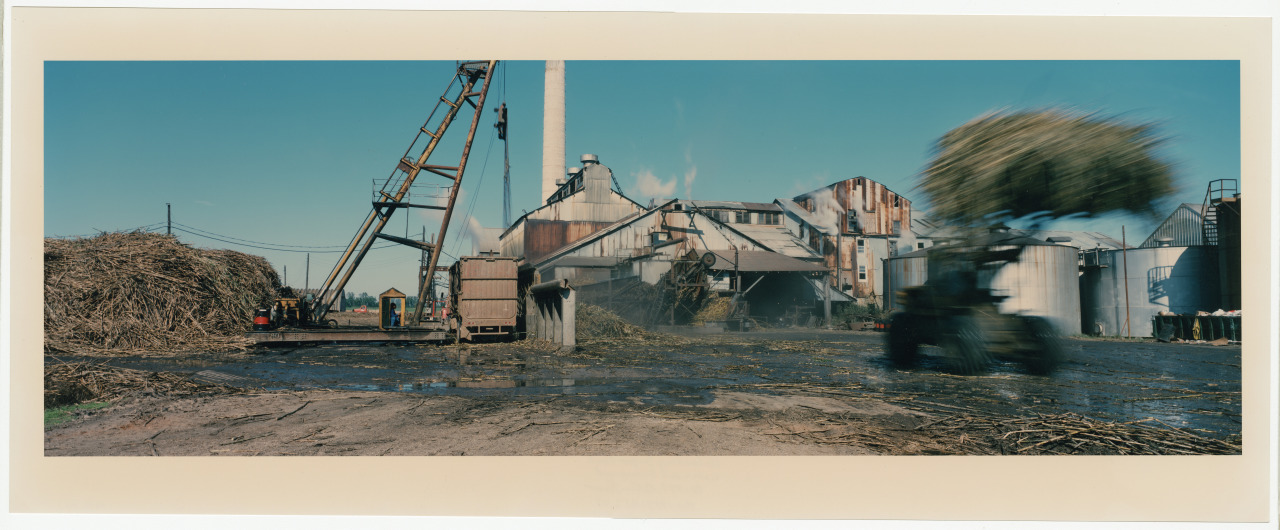Kodak introduced Type-C chromogenic paper in the 1950s. While the brand name has been officially discontinued, it lives on as a generic term for color photographic prints. Type-C prints consist of multiple layers. The bottom layer, or support, has changed over the years, employing different materials, such as fiber-based paper, resin-coated paper, and polyester plastic. The prints also contain three emulsion layers of silver halides, each sensitive to one of the primary colors of light: blue, green, and red.
After the paper has been exposed through a color negative, a silver image is formed in each layer. The introduction of a color developer—along with its dye-coupler—reduces the image to metallic silver. Further reaction with the dye coupler creates the colored dye in each layer. The process removes the silver and leaves the dyes, yielding a full-color image.

Unloading Sugar Cane, Caire and Graugnard
chromogenic analog Type-C print; 1993
by Allen Hess
The Historic New Orleans Collection, 1995.84.1
